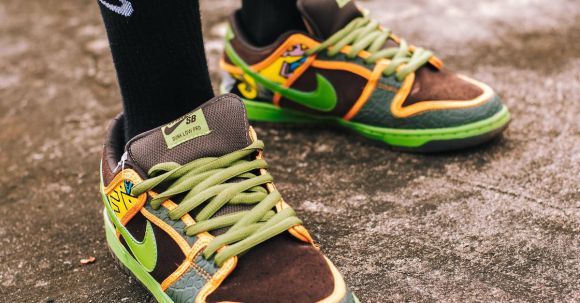In recent years, there has been a significant shift in the relationship between streetwear and high fashion. What was once considered a subculture has now become a dominant force in the fashion industry. Streetwear has not only infiltrated the runways but has also redefined what it means to be fashionable. This article explores the influence of streetwear on high fashion and how it has transformed the industry.
A New Definition of Fashion
Traditionally, high fashion has been synonymous with luxury and exclusivity. It was reserved for the elite few who could afford the high price tags associated with designer clothing. However, streetwear has challenged this notion by introducing a new definition of fashion that is accessible and relatable to the masses.
Streetwear has its roots in urban culture, influenced by skateboarding, hip-hop, and graffiti. It embraces casual and comfortable clothing, often incorporating elements such as oversized silhouettes, bold graphics, and athletic-inspired designs. This departure from the formal and rigid nature of high fashion has resonated with a younger generation seeking authenticity and self-expression.
Collaboration and Cross-Pollination
One of the most significant ways streetwear has influenced high fashion is through collaboration. High-end fashion brands have recognized the appeal of streetwear and have sought partnerships with streetwear labels to tap into their credibility and street credibility. This cross-pollination has resulted in exciting and innovative collections that blur the boundaries between streetwear and high fashion.
Brands like Louis Vuitton, Gucci, and Off-White have collaborated with streetwear icons such as Supreme, A Bathing Ape, and Vetements to create limited-edition collections that sell out within hours. These collaborations not only generate hype and buzz but also introduce streetwear aesthetics to traditional luxury fashion consumers.
Streetwear Staples on the Runway
Another way streetwear has influenced high fashion is through the incorporation of streetwear staples on the runway. Hoodies, sneakers, and tracksuits, once associated with street culture, are now seen on prestigious runways around the world. Designers have taken these everyday items and elevated them by using luxurious fabrics, intricate embellishments, and impeccable craftsmanship.
This merging of streetwear and high fashion has challenged the notion that one must sacrifice comfort for style. It has allowed individuals to embrace their personal style while still being fashionable. Moreover, it has opened up conversations about inclusivity and diversity within the fashion industry, as streetwear has long been associated with a more diverse and representative culture.
The Rise of Streetwear Brands
The influence of streetwear on high fashion can also be seen in the rise of streetwear brands. Labels such as Off-White, Fear of God, and Supreme have gained cult-like followings and have become synonymous with the fashion industry. These brands have disrupted the traditional fashion hierarchy and have forced established fashion houses to re-evaluate their strategies to stay relevant.
These streetwear brands have successfully tapped into the desires of the younger generation, offering a sense of community and identity through their clothing. Their limited-edition drops and exclusive collaborations have created a sense of urgency and excitement that was previously reserved for high fashion.
In conclusion, the influence of streetwear on high fashion cannot be overstated. Streetwear has redefined what it means to be fashionable, challenging the exclusivity and rigidity of high fashion. Through collaboration, the incorporation of streetwear staples on the runway, and the rise of streetwear brands, the fashion industry has been transformed. Streetwear has brought a sense of authenticity, inclusivity, and self-expression to high fashion, making it more accessible and relatable to a wider audience. As the lines between streetwear and high fashion continue to blur, it will be interesting to see how this influence shapes the future of the industry.




